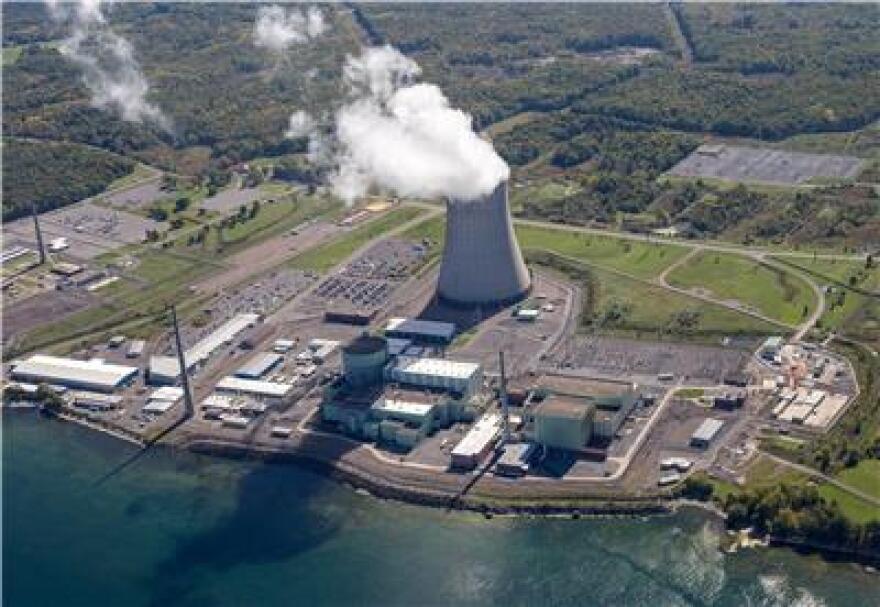WRVO - Local, state and federal leaders met at the Nine Mile Point Nuclear Station in Oswego Wednesday morning for a “hydrogen celebration” in using nuclear energy to address the climate crisis.
The U.S. Department of Energy previously awarded Nine Mile Point Nuclear Station $5.8 million for construction and installation of an electrolyzer system separating hydrogen and oxygen molecules in water.
Earlier this month, the nuclear plant received $12.5 million from the New York State Energy Research and Development Authority for using hydrogen technology for long-duration energy storage for the electric grid. Nine Mile Point is the first nuclear-powered clean hydrogen production facility in the country.
Pete Orphanos, the site vice president of Constellation's Nine Mile Point, said it was an exciting day focusing on innovation and hydrogen.
“It’s going to demonstrate the long-term value of these emission free nuclear power plants and how we can use them for other things besides just the generation of electricity for the grid,” Orphanos said. “With embracing the innovation like clean hydrogen and emission-free nuclear power plants, we expect to support the Upstate New York economy and the State of New York’s clean energy policies for another generation of people.”
Joe Dominguez, CEO of Constellation, described the potential uses from the hydrogen technology in addressing the climate crisis.
“We will make alcohols like ethanol or methanol in some applications,” Dominguez said. “In other applications we’ll blend it into the natural gas pipeline system to begin to reduce the emissions from natural gas while taking advantage of this great pipeline infrastructure we already have.”
Dominguez said the plant is exploring hydrogen fuel cell uses which could power large transportation like big trucks or buses but could also be used for microgrids to power places like hospitals when the power grid is down. Hydrogen fuel cells create electricity with water vapor as the sole byproduct.
The site aims to have its hydrogen fuel cell project operational by 2025.

